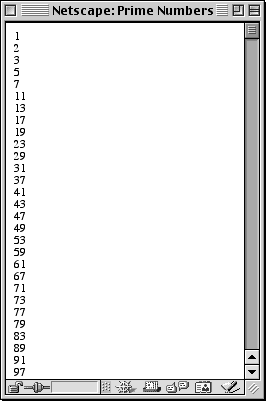The For Loop
| I l @ ve RuBoard |
| The for loop is designed to perform the specific statements for a determined number of iterations (unlike while, which runs until the condition is FALSEsimilar, but significantly different, concepts). You normally use a dummy variable in the loop for this purpose. The for loop's syntax is more complicated than the while loop and although the uses of these loops can easily overlap, you'll find one more suited to some tasks than the other. for (initial expression; condition; closing expression) { statement(s); } The initial expression will be executed once, the very first time the loop is called. Then the condition is used to determine whether or not to execute the statements. Finally, the closing expression will be executed after each time that the condition is found to be TRUE, but only after the statements are executed. Thus, to print out each value in an array, you would code: for ($n = 0; $n < count($Array); $n++) { print ("$Array[$n]<BR>\n"); } It may help your comprehension of the for loop syntax if I were to rewrite the $Day while loop from Script 6.9 as a for loop. The original code was: $Day = 1; while ($Day <= 31) { print ("<OPTION VALUE=$Day>$Day </OPTION>\n"); $Day++; } First the value of $Day was set, then the while loop stated the conditional ( $Day <= 31 ). Finally, if TRUE, the print() statement was executed and $Day was incremented. As a for loop, that same code would look like this: for ($Day = 1; $Day <= 31; $Day++) { print ("<OPTION VALUE=$Day>$Day</OPTION>\n"); } Script 6.10. This short script is a simple use of the for loop, reiterating through a process 1000 times. You'll use the for loop to print out all the prime numbers between 1 and 1000, a common programming example. To write a for loop:
Tip Although there is a fair amount of overlap as to when the two major loop constructs, while and for, can be used, you will discover as you program that sometimes one is more logical than the other. The while loop is frequently used in the retrieval of data from a database (see Chapter 11, Databases) and the for loop is a standard for working with arrays (as you'll discover in Chapter 7, Using Arrays). |
| I l @ ve RuBoard |
EAN: 2147483647
Pages: 116

